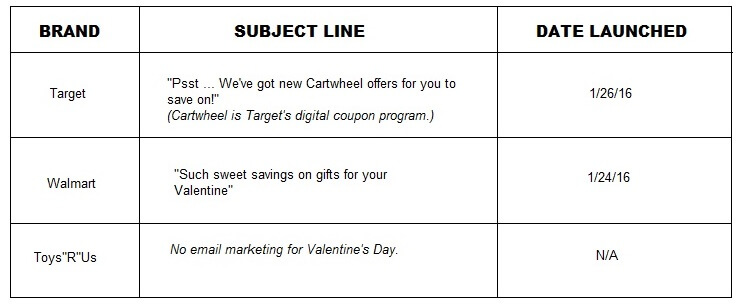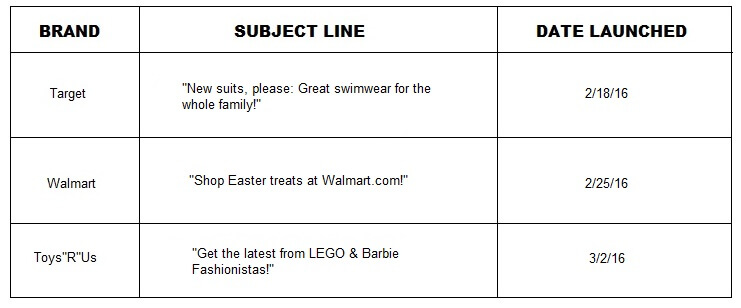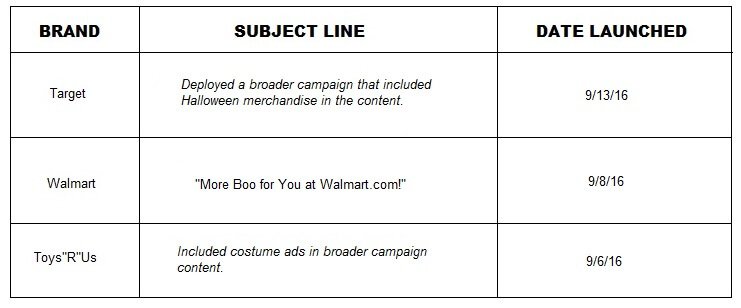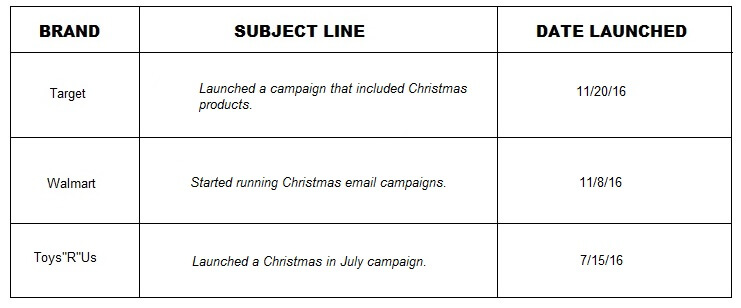When to launch holiday-themed email campaigns: A playbook for marketers
It's time to start thinking about your email marketing strategy for 2017! To help you plan ahead, columnist Jason Warnock takes a look at when three leading retail brands executed their holiday-themed email campaigns.
 Holidays can be a cash cow for retailers. But converting holiday enthusiasm into traffic and revenue isn’t a slam dunk. Timing is everything, and if your email campaign lands in inboxes at the wrong time, it can create a disconnect with your audience.
Holidays can be a cash cow for retailers. But converting holiday enthusiasm into traffic and revenue isn’t a slam dunk. Timing is everything, and if your email campaign lands in inboxes at the wrong time, it can create a disconnect with your audience.
As a marketer, it’s critical to know when to launch holiday-themed email campaigns. To help you plan your own campaigns for 2017, I’ve analyzed the campaigns of three major retail brands — Target, Walmart and Toys”R”Us — to determine when they started sending emails for specific holidays in 2016.
A holiday-by-holiday breakdown of email campaigns
Every brand is different. But despite the nuances of your audience(s) and product lines, you can learn a lot by understanding when some of the most successful retail brands launched their holiday campaigns in 2016.
Valentine’s Day
Although some retailers offer Presidents’ Day promotions, Valentine’s Day is the first major retail holiday of the calendar year. With the right campaign, retailers can use the holiday to incentivize sales during a historically slow time of year.

Takeaways: Valentine’s Day is primarily an adult holiday, so it makes sense that Toys”R”Us opted out. The remaining brands started sending holiday-themed emails during the last week of January. A good rule of thumb is to launch Valentine’s Day campaigns about three weeks before the holiday.
Easter
From a retail perspective, Easter is a strange holiday. In addition to blending religious and secular elements, the date is a moving target; it changes every year. But for certain retailers, Easter can be an opportunity to push holiday treats or a springboard into the summer shopping season.

Takeaways: The timing of Easter email campaigns ranged from mid-February to the beginning of March. Since Easter Day was March 27 in 2016, the lesson is that leading retailers give themselves a healthy four- to six-week lead time.
Halloween
Halloween is a fun and affordable holiday that has consistently grown in popularity and consumer spend. Consumers spent an average of $82.93 on Halloween in 2016, up from $74.34 in 2015, according to the National Retail Federation (NRF).

Takeaways: Leading brands start advertising for Halloween immediately after Labor Day, which gives them nearly eight weeks to connect with audiences.
Interestingly, two of the three brands I evaluated included Halloween content in the context of larger campaigns, rather than sending standalone Halloween emails. This may indicate that the holiday provides an incentive for consumers to engage with brands across a range of non-Halloween product categories, especially since Christmas is just around the corner.
Black Friday
Black Friday is the Super Bowl of retail marketing. Blow it on this holiday and your brand will likely struggle to meet its annual revenue goals.
The upside is that consumers already connect the holiday with dropping significant dollars on merchandise from their favorite retail brands.

Takeaways: Major brands begin marketing for Good Friday almost immediately after Halloween, during the first and second week of November. This only gives brands two or three weeks from the launch of holiday email campaigns to the biggest shopping day of the year, but that’s all it takes.
The simple and direct subject lines for these campaigns show that your audience already knows what the holiday is about and is ready to hit the ground running.
Christmas
Christmas falls later than Black Friday on the calendar, but marketing initiatives can begin much earlier. While some retailers launch Christmas email campaigns concurrently with Black Friday campaigns, others start marketing for Christmas months in advance.

Takeaways: The big lesson for Christmas emails is to distribute them early and often. Although the July campaign that Toys”R”Us launched was technically leveraging the Christmas-in-July concept for additional summer sales, it also got parents and grandparents thinking about gift ideas and early Christmas purchases.
Playbook for marketers
Knowing when to send emails for specific holidays is important. But timing isn’t the only factor in the success or failure of holiday-themed email campaigns. As a brand marketer, there are several other questions you need to ask before you invest in a holiday marketing initiative:
- Should your brand participate in every holiday-themed campaign?
You don’t have to launch an email campaign for every holiday. In fact, some holidays may not present an appropriate promotional opportunity for your brand.
Remember how Toys”R”Us decided to sit out Valentine’s Day? While most people don’t shop for toys for Valentine’s Day, it is a big holiday for big-box retailers like Target and Walmart.
- Is there a benefit to launching a holiday-themed campaign even earlier?
Valentine’s Day and Halloween shopping don’t require a ton of planning, so there’s no need to start email campaigns more than a month ahead of time. On the other hand, Christmas and Easter often require extensive planning, since consumers purchase gifts, food and other items at Christmas and the date for Easter changes every year.
It’s usually not a good idea to overlap holiday campaigns, but emails can serve as a reminder that an important holiday is on the horizon. The key is to understand how much planning each holiday requires and schedule your campaigns accordingly.
- What messages should be included in holiday-themed campaigns?
For holidays that require consumers to buy gifts for a limited number of people (like Valentine’s Day and Easter), email content should focus less on cost savings and more on finding the perfect gift for people you care about. On the other hand, when you’re purchasing for a lot of people (like at Christmas), cost savings becomes a major factor in purchase decisions.
- How often should the brand follow up?
Determining when to send your first email is just the beginning of a successful holiday campaign. The art of following up is a matter of knowing your audience and recognizing what is valuable to them at various points in the holiday shopping season.
Consumers can be fickle creatures, so it’s important to constantly adapt your email marketing agenda to the changing needs of the retail marketplace. But by taking the time to understand how and when leading retail brands execute their holiday-themed email campaigns, you can develop smarter and more successful campaigns in 2017.
Contributing authors are invited to create content for MarTech and are chosen for their expertise and contribution to the martech community. Our contributors work under the oversight of the editorial staff and contributions are checked for quality and relevance to our readers. MarTech is owned by Semrush. Contributor was not asked to make any direct or indirect mentions of Semrush. The opinions they express are their own.
Related stories
New on MarTech